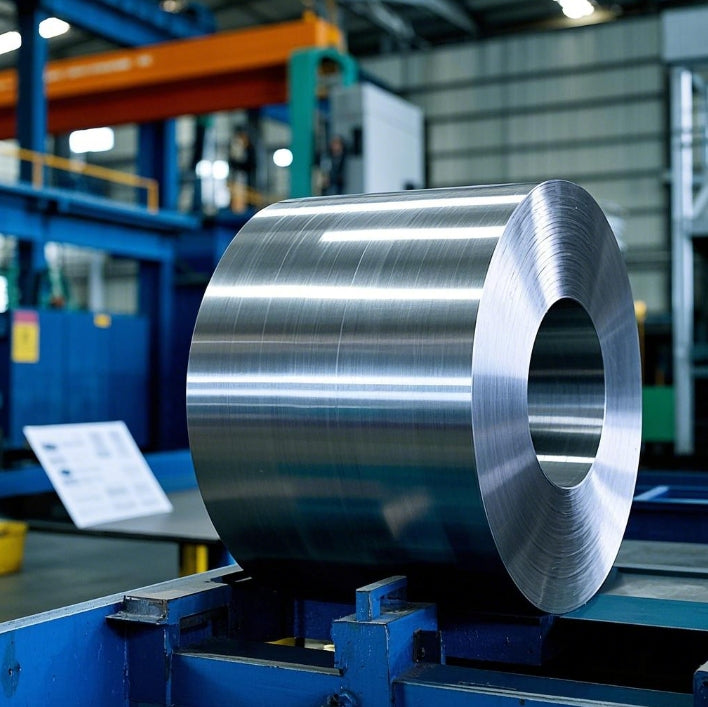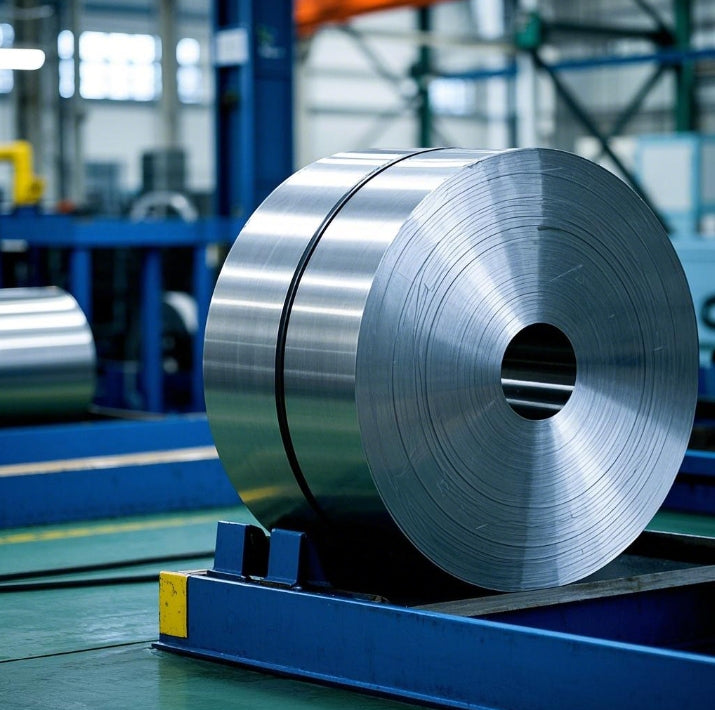StockSteel
Architectural-Grade Stainless Steel Transition Strip | AISI 304 & 316L
Architectural-Grade Stainless Steel Transition Strip | AISI 304 & 316L
Couldn't load pickup availability
Architectural-Grade Stainless Steel Transition Strip | AISI 304 & 316L
Product Overview
The stainless steel transition strip is designed for architectural applications requiring durability, corrosion resistance, and aesthetic appeal. Made from premium AISI 304 and 316L grades, this strip seamlessly bridges gaps between surfaces while offering structural integrity. Ideal for stainless steel tile edging strip applications, it is widely used in flooring, wall cladding, and industrial design.
Technical Specifications
| Property | AISI 304 | AISI 316L |
|---|---|---|
| Thickness (mm) | 0.5–5.0 | 0.5–5.0 |
| Width (mm) | 10–200 | 10–200 |
| Hardness | 187 HB (Brinell) | 187 HB (Brinell) |
| Tensile Strength (MPa) | 485 (min) | 480–560 |
| Yield Strength (MPa) | 170 (min) | 177–290 |
| Elongation (%) | 40 | 40–50 |
| Surface Finish | 2B (Cold Rolled), BA, No.4 | 2B (Cold Rolled), BA, No.4 |
| Processing | Cold Rolled, Annealed | Cold Rolled, Solution Treated |
Key Attributes
-
Tensile Strength:
making it ideal for high-stress environments like marine structures or chemical plants. AISI 304 provides a minimum tensile strength of 485 MPa, suitable for general architectural use.
AISI 316L exhibits superior tensile strength (480–560 MPa), -
Bending Strength:
Both grades demonstrate excellent formability. The bending strength of stainless steel transition strip typically ranges between 1.5–2× tensile strength, ensuring resistance to deformation under load. -
Identification Methods:
- Grade Marking: Laser-etched labels (e.g., "304" or "316L") on the strip edge.
- Chemical Analysis: Verified via XRF (X-ray fluorescence) for Cr (16–18% in 316L), Ni (10–14% in 316L), and Mo (2–3% in 316L).
-
Weight Calculation:
Formula:- AISI 304 density: 7.93 g/cm³
- AISI 316L density: 8.00 g/cm³
-
Why Stainless Steel Rusts:
Despite high corrosion resistance, localized rust may occur due to:- Chloride Exposure: Prolonged contact with seawater or de-icing salts can break down the passive oxide layer.
- Mechanical Damage: Scratches or abrasions expose raw steel to oxygen and moisture.
- Improper Heat Treatment: Residual stresses from welding or grinding may accelerate corrosion.
Applications in the Stainless Steel Strip Market
The global stainless steel strip market prioritizes materials like AISI 304 and 316L for their versatility:
- Architectural Edging: Used as stainless steel tile edging strip to protect tile edges and enhance aesthetics.
- Industrial Framing: Structural support in HVAC systems and machinery.
- Marine Hardware: Resists saltwater corrosion in shipbuilding and offshore platforms.
Why Choose Our Stainless Steel Transition Strips?
- Premium Material: Only AISI 304/316L grades with certified Cr, Ni, and Mo content.
- Precision Manufacturing: Cold-rolled surfaces ensure uniformity and minimal edge burrs.
- Corrosion Resistance: Enhanced by solution treatment (316L) and passivation.
- Customization: Tailored dimensions and finishes (e.g., brushed, mirror-polished).
- Sustainability: 100% recyclable, aligning with green building standards.





